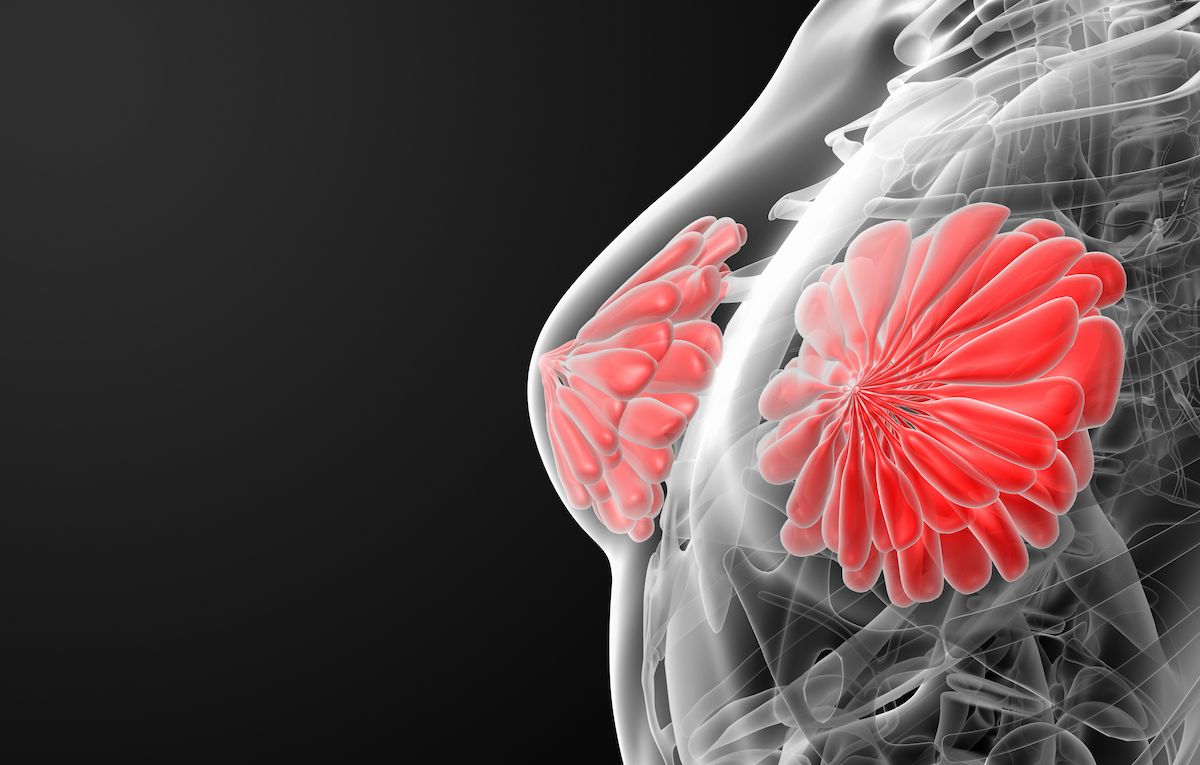Trastuzumab Deruxtecan Regimen Accepted for Review in HER2+ Breast Cancer
The decision is based on phase 3 DESTINY-Breast11 trial data, in which the investigational regimen displayed improved pCR vs SOC in this breast cancer population.
The FDA has set a Prescription Drug User Fee Act date of May 18, 2026.

The FDA has accepted a supplemental biologics license application for fam-trastuzumab deruxtecan-nxki (T-DXd; Enhertu) followed by paclitaxel, trastuzumab (Herceptin), and pertuzumab (Perjetea; THP) as a neoadjuvant treatment for adult patients with HER2-positive stage II or III breast cancer, according to a news release from the drug’s developers, Daiichi Sankyo and AstraZeneca.1
The regulatory decision was based on findings from the phase 3 DESTINY-Breast11 (NCT05113251) trial, in which the combination displayed a statistically significant improvement in pathologic complete response (pCR) vs standard-of-care dose-dense doxorubicin and cyclophosphamide followed by THP (ddAC-THP) in high-risk, locally advanced HER2-positive early-stage breast cancer. Additionally, the trial findings revealed that an early positive trend in event-free survival (EFS) was observed for the T-DXd–based regimen.
The FDA has set a Prescription Drug User Fee Act date of May 18, 2026.
Based on a recommendation from an independent data monitoring committee, enrollment in a third arm of the DESTINY-Breast11 trial evaluating T-DXd alone in this patient population was terminated based on a previous efficacy assessment of the study arms.
“Achieving a [pCR] prior to surgery in HER2-positive early-stage breast cancer is critical to reducing the risk of disease recurrence and improving the potential for cure,” Ken Takeshita, MD, global head of research and development at Daiichi Sankyo, said in the news release on the regulatory decision.1 “If approved, [T-DXd] could change how patients with high-risk HER2-positive early-stage breast cancer are treated, and we look forward to working closely with the FDA to bring this innovative treatment regimen to patients in this setting.”
In the global, multicenter trial, T-DXd at 5.4 mg/kg was assessed with THP vs ddAC-THP in patients with high-risk, lymph node–positive or primary tumor stage III or IV disease. Those enrolled were randomly assigned 1:1:1 to receive T-DXd alone or with THP or receive ddAC-THP prior to the termination of the monotherapy arm. Patients received T-DXd or ddAC for 4 cycles followed by 4 cycles of THP.
The primary end point of the trial was the pCR rate. Secondary end points included EFS, invasive disease-free survival, and overall survival.2
Neoadjuvant T-DXd followed by THP showed an enhanced safety profile vs ddAC-THP in this patient population. The safety profiles of T-DXd and THP in the DESTINY-Breast11 study were consistent with the known safety profiles of each individual agent, and no new safety signals emerged. Furthermore, rates of interstitial lung disease were similar across both study arms, as assessed by an independent adjudication committee.
“The clinically meaningful improvement in [pCR] and favorable safety profile seen with DESTINY-Breast11 highlight the opportunity for [T-DXd] followed by THP to become an important new approach for patients with HER2-positive early breast cancer,” said Susan Galbraith, MBBChir, PhD, executive vice president of oncology hematology research and development at AstraZeneca, in the news release.1 “[T-DXd] is already established in the metastatic setting, and now we have the potential to expand its use into earlier stages of disease where cure is possible.”
Those 18 years or older were eligible for trial enrollment if they had histologically confirmed HER2-positive early breast cancer, an ECOG performance status of 0 or 1, adequate organ and bone marrow function, a left ventricular ejection fraction of 50% or greater within 28 days prior to assignment, and either formalin-fixed paraffin-embedded tissue block of 2 cores or 20 freshly cut serial tumor slides for HER2 assessment.
References
- ENHERTU followed by THP supplemental biologics license application accepted in the U.S. for patients with high-risk HER2 positive early-stage breast cancer prior to surgery. News release. Daiichi Sankyo. October 1, 2025. Accessed October 2, 2025. https://tinyurl.com/bdbzdc7w
- Trastuzumab deruxtecan (T-DXd) alone or in sequence with THP, versus standard treatment (ddAC-THP), in HER2-positive early breast cancer. ClinicalTrials.gov. Updated August 3, 2025. Accessed October 2, 2025. https://tinyurl.com/ye39mabw